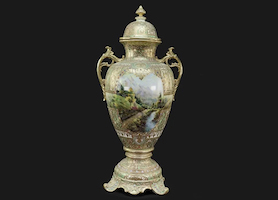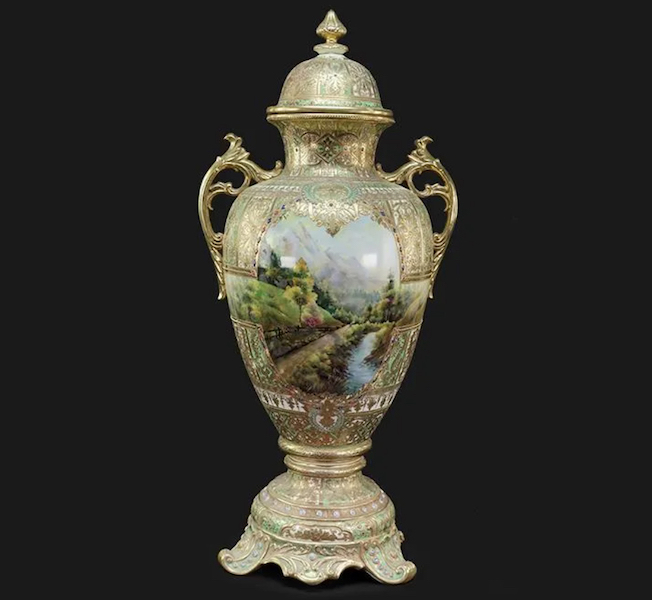
NEW YORK — Vintage porcelain has always been collectible. Some pieces can cost as much as a house, while others have more reasonable prices. Japanese culture has a rich porcelain-making tradition, driven in part by an abundance of good clay. Porcelain has been made throughout the country for centuries, and archeologists have documented at least six kilns designed for firing ceramics that date back to ancient times.
By the 19th century, Japanese porcelain artists were making items for export to Europe and the United States. In the latter region, Japanese porcelain was far more affordable than similar wares from Europe and England, which encouraged a thriving market. Today, older examples from the Asian country remain highly sought after. The porcelain’s initial low price reflected the meager wages workers received despite their skill — it was not a reflection of its quality, which was strong overall and sometimes absolutely exceptional.
Of particular interest are pre-1920 porcelain items, ranging from urns, vases and teapots to humidors and dinnerware, all marked “Nippon” on the base. This is not the manufacturer’s name, but the Japanese word for Japan; the McKinley Tariff Act of 1890 required goods imported into the United States to be marked with their country of origin, so “Nippon” was lettered on export pieces.
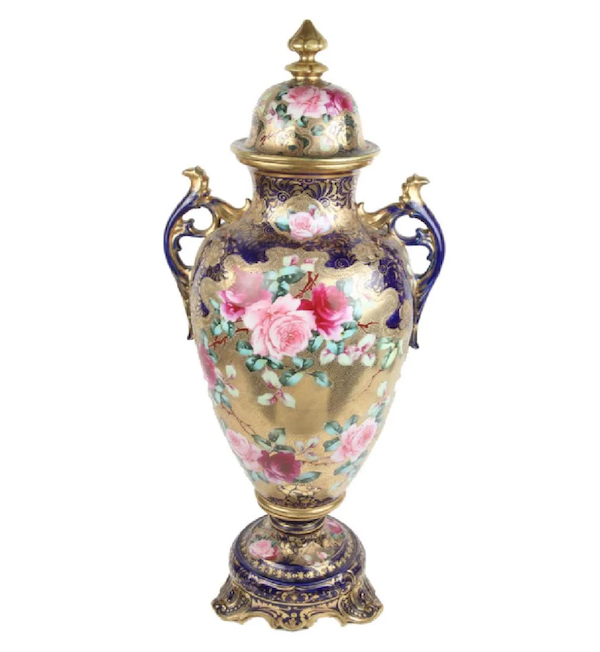
In 1921, the US government changed its interpretation of the law to state that an English-language spelling of the word had to be used instead of “Nippon.” This stipulation benefitted collectors greatly for decades as it confined the date of a piece marked “Nippon” to the time span of 1890-1921. Given the current lamentable prevalence of faked pieces, it can be challenging for the casual buyer to distinguish an authentic Nippon piece from a later-made one. Of course, collectors should do their homework before they open their wallets by comparing marks, studying a piece’s manufacture and learning how the enameling and decoration was applied.
Nippon porcelain is known for its elaborate workmanship and colorful designs, which typically exhibit Art Nouveau motifs of naturalistic scenes in muted floral tones. A notable example of an exceptionally-detailed piece is a Nippon porcelain covered urn that sported double handles, gilding and enameling throughout. Depicting a scene of mountains and water on either side, the 38in-tall urn made $42,000 plus the buyer’s premium in September 2020 at Susanin’s Auctions.
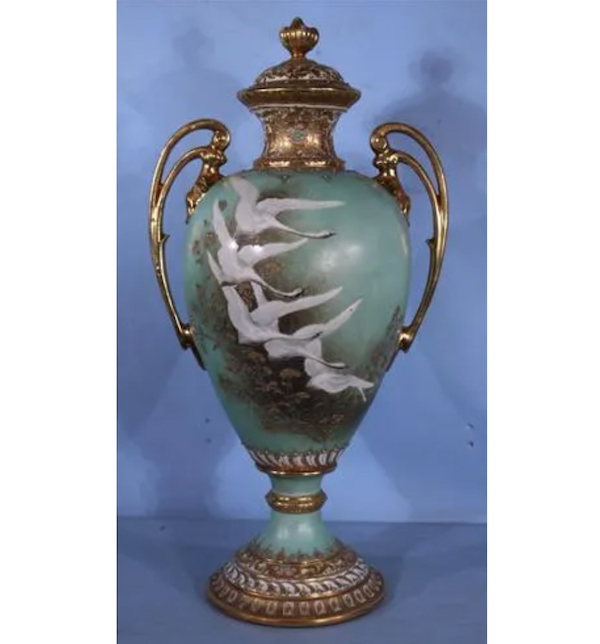
Besides gilding, another typical decorating technique within Nippon porcelain is known as Moriage, in which wet slipware is brushed onto, or otherwise applied, to the surface of a piece. A lavishly-decorated Nippon Moriage hand-painted lidded urn featuring roses had Moriage gilt accented with cobalt blue and green on the lid. Standing 32in tall, it sold for $6,000 plus the buyer’s premium in July 2019 at Manor Auctions.
In keeping with the Art Nouveau aesthetic that prevailed during the late 19th and early 20th centuries, floral imagery is commonly seen on Nippon porcelain wares. In addition to the aforementioned roses, wisteria flowers were favored. In Japan, wisteria symbolizes longevity as well as intelligence and good fortune. A parcel gilt and jeweled vase hand-painted with wisteria sold for $5,250 plus the buyer’s premium in February 2014 at Simpson Galleries, LLC.
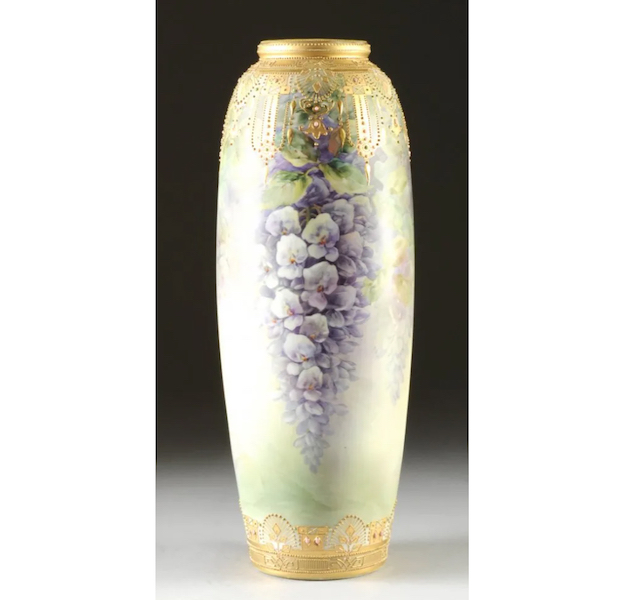
The vase’s body was fairly simple and lacked handles, so its decoration made it noteworthy. Its elongated body stood 17-⅝in tall and featured a delicate gilt bead and jeweled necklace of Neo-Egyptian palmettes in relief with scrolling bellflowers. It was further embellished with pendants that hung in graduated beaded ropes ending in stylized blossoms of enameled Persian blue and pale pink cabochons, and on its sides were finely painted wisteria vines with blossoms in hues of purple and lavender set within a misty background.
The swan is a popular motif in art and antiques and that is certainly true of Nippon porcelain, as evidenced by a 23in-tall urn depicting flying swans that brought $5,500 plus the buyer’s premium in October 2019 at Stevens Auction Company. Similar scenes of flying geese against a pale green background grace other examples of Nippon porcelain.
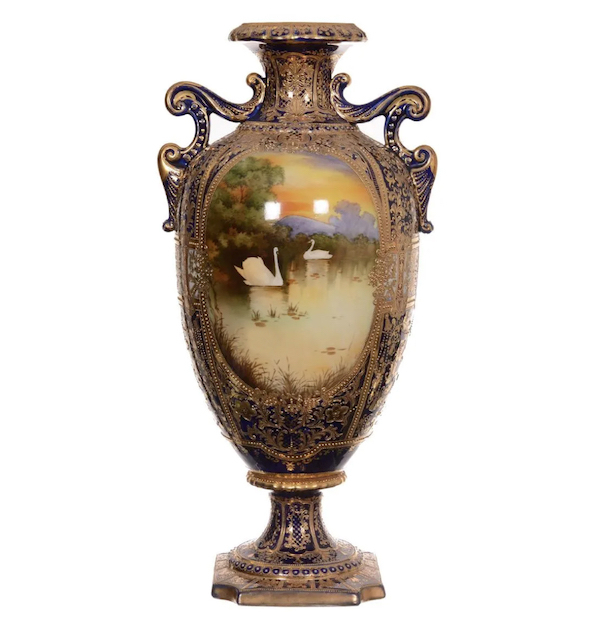
Double-handled vases and urns tend to bring top prices for Nippon porcelain and the more elaborate, the better. A large pedestal two-handled vase with a medallion scene of two swans swimming on a lake realized $4,250 plus the buyer’s premium in March 2018 at Woody Auction LLC. The 23-½in-tall vase featured extensive gold enamel with fine cobalt blue trim and beaded highlights and had a reverse medallion featuring pink and white roses.
Values for Nippon porcelain can range from a few hundred dollars for an undecorated piece into the thousands for extensively-decorated examples. In general, as is true with most types of antiques, the more ornate a piece is, the higher the price it will bring. Nippon porcelain was plentiful as an export in its day and those that benefitted from the attention of artisans who strived to include dozens upon dozens of details and flourishes command peak interest among contemporary collectors.


